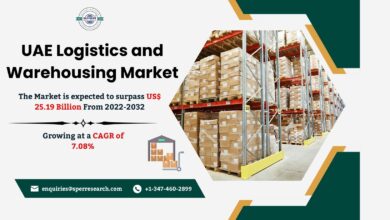Revolutionizing Retail: Navigating the E-commerce Wave
Discover the revolutionizing ways to navigate E-commerce

No other industry has been transformed as dramatically in the current world more than the retail industry. Traditional stores, which used to set shopping patterns, are shifting very quickly because of the emerging online buying. The benefits and advantages of ERP software UAE did not only influence the customer’s behavior but also put these shopping Centre retailers under pressure to venture into online selling, leaving them out in the cold otherwise.
This blog places emphasis on the effects of e-commerce on the retail industry, the possibilities and threats of the new paradigm, and ways of sustaining growth in the new environment.
The E-commerce Boom: A New Era for Retail
E-commerce began as an extra place of sale for most organizations but has now taken over traditional retailing. Statista has it that global e-commerce sales are expected to cross $ 7.5 trillion within the next five years. This is so because of technology, changed consumer attitude, and the trend towards the use of technology for buying.
It is very clear that e-commerce has no fixed location advantage among other traditional businesses. Through the use of the Internet, the firms are in a position to sell their products directly to the consumers worldwide while having no outlets in such countries. This has led to market opportunities that were earlier not possible thus helping the smallest of retailers or even a start-up.
Shifts in Consumer Behavior
In the case of e-commerce, customers have shifted their focus to convenience. The new innovative feature has allowed shopping at any given time, using any device and from any part of the world. : Such a one-stop shopping experience has replaced the traditional setting common with shoppers who had to rush to the store at certain hours of the day to shop. But they are able to go through lists, compare prices and buy products with just the click of a button. This has in turn caused enhanced customer demands for speedy delivery, easy return policy, and personalized buying.
Issues in E-commerce Environment
Nevertheless, there are several difficulties that the e-commerce wave has brought to retailers: They include the following: The competition is increasing as a major factor. This has reached a level that it is very hard for any business to make a sell due to the high number of online stores. In order to address this problem, it becomes imperative for the retailers involved to concentrate retail erp software aspect of the products as well as the shopping experience. The easy to navigate website, excellent products, and customer service can indeed make customers appreciate a particular brand over others.
Technological Factors Affecting E-commerce
The driving force behind the e-commerce revolution is technology. There are several sources of innovations that are shaping the industry and changing the ways retailers do business and interact with consumers. Some of the key technological advancements include:
-
AR And VR integration:
Both AR and VR are being seen to play a crucial role in improving customer relations with products via internet. For instance, AR would help the customers to have a preview of how a piece of furniture would feel like in their homes before purchasing it, and through shopping through VR, customers would feel like they are in a real store physically.
-
Big Data and Analytics:
For this reason, writing, responding volumes of data generated in e-commerce firms, retailers are gradually making big data and analytics to get insight in the shopping behaviors and trends of consumers as well as to devise plans to move toward their goals.
Blockchain:
Even though the use of the block-chain technology is relatively young and therefore still undefined, it can be said that it is among the biggest innovations that can revolutionize the e-commerce and increase the level of openness of the transactions. It is highly beneficial in payments as it will lead to a kind of decentralized process of payments and tracking the supply chain activity in other to curb fraud and counterfeits.
Automation and Robotics:
As of now, automated and robotic means of warehouse and fulfillment are helping retailers to meet the increasing demands of speed delivery. Picking, packing, and shipping of products can be carried out by robotic and automated equipment than human labor and mainly reduces operational costs and increases efficiency.
Omni channel Retailing:
However, with e-commerce steadily on the rise, the future of retail is not a completely virtual experience. However, the conventional model of selling through the Internet outlet alone is now giving way to omnichannel retailing, which involves blending cyberspace with the physical world. Grocers and other store-based retailers see the need to deliver similar customer experience across multiple touch points – physical, virtual, and social.
E-commerce and Sustainability: A Growing Concern
With e-commerce industry growth, so grows the problem of its negative environmental effects. Online ordering also means more packaging material wastes, carbon footprints from delivery trucks, and the general pressure in transportation systems. Today’s consumers are aware of the environmental impacts and are pressuring the retailers to ensure that they adopt Sustainable strategies.
Consequently, the vast majority of e-commerce companies have started using environmentally friendly packaging materials, providing customers with an opportunity to choose carbon-neutral delivery, and looking for the means to reduce return rates, which are also environmentally problematic. Those retailers, who pay attention to sustainability do this not only for the benefit of the buyers who care about the environment but also for the sake of their business as the practice of sustainable actions is becoming more and more popular all over the world.
The future of retail.
This is where the future of retail is, lying in adapting to the constant development of technology and the internet. Thus, flexibility, creativity, and customer orientation become key success factors for the companies entering the e-commerce wave. Competitive advantages include continued investment in technology, providing further customization to the consumer, and expanding internet presence.
Conclusion
At the moment the situation is quite dynamic in the retail industry because the e-commerce segment is growing rapidly. While there are some disadvantages moving from the traditional platform to online one, it creates opportunities for further development, innovation, and meeting the consumer’s needs for retailers. With regard to this, it is suggested that firms prepare their operations for the future of e-commerce by incorporating technology, sustainability, and the Omni channel strategies.



